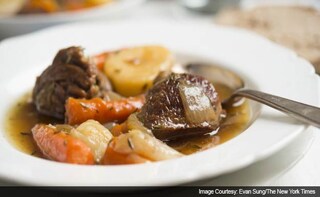With St. Patrick's Day just around the corner, you may be thinking about corned beef and cabbage. There's nothing wrong with it, but that's Irish-American. For something that may actually be served on Irish soil, have a go at a proper Irish stew.
Advertisement
Advertisement
Advertisement
Advertisement
For the latest food news, health tips and recipes, like us on Facebook or follow us on Twitter and YouTube.
Advertisement
Tags:
